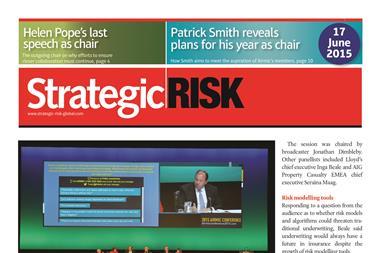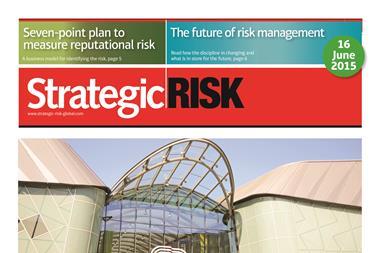Caroline Woolley and Martin Caddick say that claims experts, such as forensic accountants, can help plug the information gap and put companies’ claims policies in the context of business continuity
Summer flooding, the Buncefield explosion, fire, hurricanes: these are just some of the external challenges to business continuity that result in claims for business interruption. Despite the increase in catastrophes and the interest in the press, many companies do not seek assistance in a claim situation. The result may be that claims are understated.
Insurers still struggle to find the quality of information required to make accurate reservations against losses arising from business interruption claims. Also, a lack of information at the policy placement stage means both parties may remain unaware of the true exposures they face and whether the losses are covered. While the post-event issues must be addressed, there is also recognition of the need to take a proactive stance. Companies should be linking business continuity efforts to their insurance policies.
Business interruption insurance provides cover for loss in consequence of damage, in terms of loss of revenue/gross profit and increased cost of working (ICW) – additional costs incurred in the mitigation of loss over and above normal costs. The aspects of business interruption policies that can be directly influenced by business continuity, and associated considerations include:
• Overall risk transfer decision: Identify whether
it is an insurable risk – Then review options for reducing risk and assess your risk transfer options.
• Basis of cover: Decide whether you want full business interruption or ICW only – Consider whether you are confident in alternative options such as operational capacity at other sites, strategic stock recovery and plans.
• Indemnity period: Determine what will need to be done during the crisis and recovery period – Calculate the length of the recovery period, considering reinstatement times, order lead times for replacement of goods or assets, and recovery of sales.
• Optional clauses: Consider the need for: a supplier extension (mapping of suppliers, reliance on sole supplier, business continuity plans of suppliers); customer extension (reliance on key customers and ability to reschedule); denial of access cover (identification of risk scenarios and business impact analysis); and additional ICW (business strategy in loss mitigation and focus of attention in crisis period).
• Type of deductible: Deduce on level based on business continuity efforts and affordability – Take into account value/waiting period options, stock levels, lead times and availability of stock.
• Insurers’ perception of risk: Demonstrate your business continuity efforts through quantification of loss to improve premium negotiations and increase competition among insurers for your business.
A business interruption and claims specialist can translate the business continuity work for insurance purposes, but the approach must be consistent and co-ordinated both pre- and post-event.
Pre-event
Business continuity experts provide assistance to ensure:
• the buy-in of the whole of the business;
• that you are prepared for the worst; and
• that there are documented procedures in place to avoid interruption and mitigate any loss.
The information should then be used as part of an overall business interruption insurance review, including a quantification of your business continuity efforts by performing business interruption loss calculations under the maximum loss, plus the mitigated loss scenario. The process would include an in-depth review of your insurance policy to ensure it meets your needs and will respond in line with expectations in the event of a loss.
Just as you would test your business continuity plan, the business interruption policy should be stress tested to check it provides cover for the mitigating actions specified in your plans. Insurance and claims procedures, including the instruction of a claims expert, should be included in your master business continuity plan to allow you to focus on the recovery of your business (rather than the insurance claim) and maximise cash flow through early interim payments.
Post-event
The above steps will ensure you are prepared and that you can be confident of cover under your policy. Your business continuity efforts will ensure interruption is minimised (your business interruption policy states that it is your duty to mitigate your loss), and claims experts can work with you to calculate realistic estimates of loss early on, to ensure that insurers’ reserves are sufficient, and that your claim is maximised within your policy terms.
The result is that you stay in control of the claims process, and can then concentrate on the recovery of your business. The claims process is then faster, as the expectations of parties are managed, and information to insurers is improved and more accurate, hopefully making the whole experience much more tolerable for all those involved.
Case study
The proof is in the pudding. So let us take the example of a bakery that experienced a devastating fire in the lead-up to Easter.
The nature of the business is that little stock can be held. There is limited back-up, because the other bakeries in the group are already at capacity and are too far away to deliver fresh produce. Little emphasis had been placed on continuity plans and the plans had not been tested. The company was in imminent danger of losing key clients to competitors and missing out on peak sales, as it was not prepared for such an event.
The initial focus after the incident was on replacing equipment and clearing up the site. This meant that insufficient attention was given to the insurance claim, particularly the business interruption in terms of the value and period of loss.
Many mistakes were made, including the following ‘classics’:
• Pre-loss estimate of loss of gross profit:
This was under-estimated as a result of using a simple average established from prior year annual accounting gross profit. This failed to take account of the adjustment required for insurance gross profit, the growth of the business during the year as a result of a new client, and the seasonality of the business. Underinsurance was the result.
• Post-loss overrun on repair period: The period of disruption was underestimated because repairs took longer than expected. This was due to new standards, the delay in the safety standards inspection and the delay in decisions on acceptable replacements, due to disagreements over betterment. The interruption period exceeded the indemnity period.
The problem worsened because the business interruption claim was dealt with late in the process, and the full impact on production and sales was not considered until after the reserves had been set. Consequently, reserves were underestimated, causing the difference in expectations of the parties to be great.
As a result of the fire and the extended interruption:
• the bakery lost shelf space with key supermarket clients;
• the business interruption claim remains unsettled due to underinsurance and the length of the interruption period;
• losses will continue beyond the indemnity period; and
• the disputes with insurers have held up interim payments. Clearly not an outcome that any business, or risk manager, can afford!
What could have happened
If the client had engaged its own claims experts (including forensic accountants) at an early stage, much more accurate information could have been provided to:
• the company, to help it prepare for the interruption period and cash flow;
• the insurer, on an appropriate level of reserves, taking into account the seasonality of sales and the impact of property damage decisions on the period of loss.
The claims experts could also have dealt with the claim, the parties involved, and the appropriate mitigation, which would have enabled the client to get back to concentrating on the business and trying to protect relationships with key clients.
It is possible for a policy to have a claims preparation clause, as discussed earlier in this special report (p31), which would mean that the cost of the claims expert would be recoverable from insurers as part of the claim. It is also worth noting that management time spent on an incident is not usually claimable under the policy, as it is not an additional cost.
Pre-loss advice from experts can also be valuable. In this example, business continuity specialists could have assisted in providing proactive advice in relation to the adequacy of procedures for dealing with a major incident, loss mitigation and the level of protection appropriate for disaster recovery and business continuity. Business interruption and claims specialty would use this to help with setting the correct sums insured and given consideration to the appropriateness of indemnity periods.
Hindsight
Take a further step towards protection of your company by translating your business continuity efforts into loss calculations, and quantifying the benefit of your efforts. You should also check your business interruption policy is the right fit for you, and whether the suggested mitigating actions would actually be covered. By engaging business interruption and claims experts, you can learn from other people’s mistakes, and make use of their hindsight. You can then revisit this whenever the business goes through a major change.
Do not leave it until you suffer a loss before looking at your policy. With the assistance of experienced business interruption and claims experts, you can make use of your business continuity work in the placement and negotiation of your business interruption policy. It is the final piece of the jigsaw puzzle.
Postscript
Caroline Woolley is the accountancy leader in Marsh Risk Consulting’s forensic accountancy and claims services practice, and Martin Caddick is the UK leader of Marsh Risk Consulting’s business continuity practice. Email: caroline.woolley@marsh.com, martin.caddick@marsh.com


















